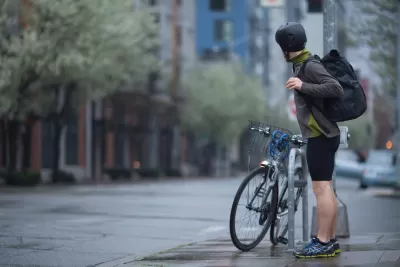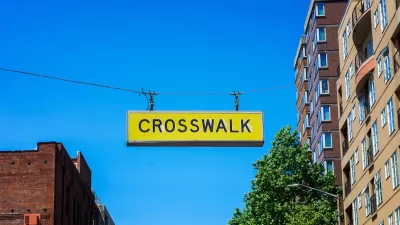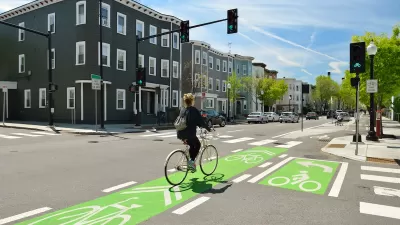A measure set to go before voters in November will fund road safety and mobility projects, but advocates say a much bigger investment is required to meet the city’s needs.

A coalition of Seattle mobility advocates are calling on the city to seek a transportation levy package worth $3 billion, a number much larger than is currently being considered.
As Doug Trumm explains in The Urbanist, “Move Seattle, the nine-year transportation levy approved in 2015 and set to expire at year’s end, was a $930 million package. However, with the City falling behind on key climate goals and actually going backward recently on its pledge to end traffic deaths by 2030, the coalition argues now is the time to accelerate investment rather than coast.”
The coalition claims that the city needs the $3 billion investment to redesign its most dangerous streets, add sidewalks to streets lacking them, build new dedicated transit lanes, add new bike lanes, and make pedestrian safety upgrades to intersections.
Trumm points out that “Tripling the size of the levy may be seen as a dramatic step, but it is one the Harrell administration just took when renewing the Seattle Housing Levy in 2023. Voters supported that decision to the tune of a landslide 69% victory.”
According to Trumm, “Mayor Bruce Harrell is expected to unveil his proposal for the levy package this spring, and it should go to the city council for approval by the summer so that it can appear on November ballots.”
FULL STORY: Mobility Advocates Push Seattle to Seek Bigger $3 Billion Levy

Alabama: Trump Terminates Settlements for Black Communities Harmed By Raw Sewage
Trump deemed the landmark civil rights agreement “illegal DEI and environmental justice policy.”

Planetizen Federal Action Tracker
A weekly monitor of how Trump’s orders and actions are impacting planners and planning in America.

The 120 Year Old Tiny Home Villages That Sheltered San Francisco’s Earthquake Refugees
More than a century ago, San Francisco mobilized to house thousands of residents displaced by the 1906 earthquake. Could their strategy offer a model for the present?

LA’s Tree Emergency Goes Beyond Vandalism
After a vandal destroyed dozens of downtown LA trees, Mayor Karen Bass vowed to replace them. Days later, she slashed the city’s tree budget.

Sacramento Leads Nation With Bus-Mounted Bike Lane Enforcement Cameras
The city is the first to use its bus-mounted traffic enforcement system to cite drivers who park or drive in bike lanes.

Seattle Voters Approve Social Housing Referendum
Voters approved a corporate tax to fund the city’s housing authority despite an opposition campaign funded by Amazon and Microsoft.
Urban Design for Planners 1: Software Tools
This six-course series explores essential urban design concepts using open source software and equips planners with the tools they need to participate fully in the urban design process.
Planning for Universal Design
Learn the tools for implementing Universal Design in planning regulations.
Ada County Highway District
Clanton & Associates, Inc.
Jessamine County Fiscal Court
Institute for Housing and Urban Development Studies (IHS)
City of Grandview
Harvard GSD Executive Education
Toledo-Lucas County Plan Commissions
Salt Lake City
NYU Wagner Graduate School of Public Service





























